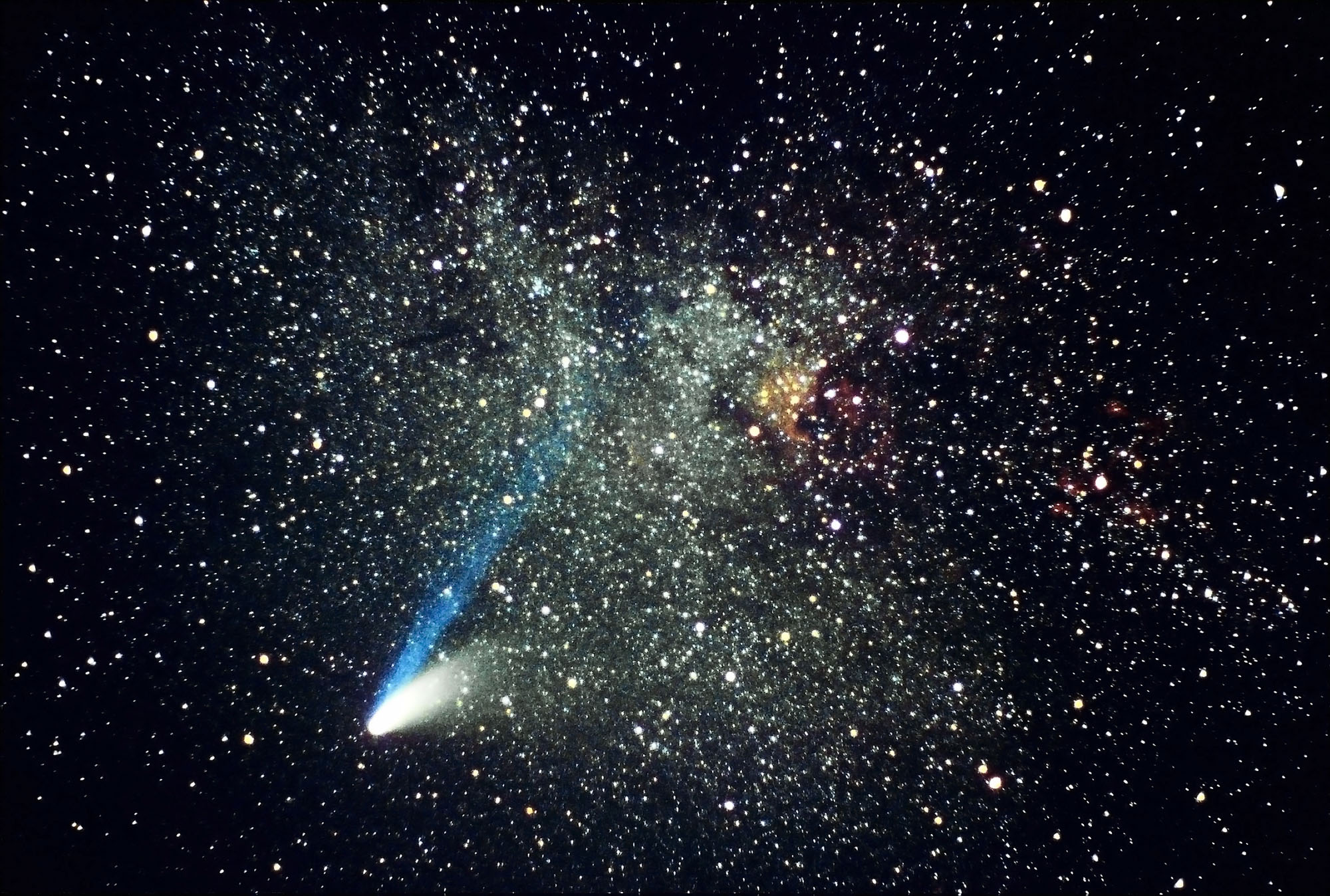The bright comet Hale-Bopp reveals all its beauty standing in the Milky Way during its perihelion in March 1997.
If the dinosaurs had escaped the extinction from the asteroid impact 65 million years ago, they would certainly have panicked in the face of the comet Hale-Bopp. But since we could calculate that this comet would not hit Earth, we could admire the fantastic beauty of this stellar happening.
-
Comet Hale-Bopp in 1997

